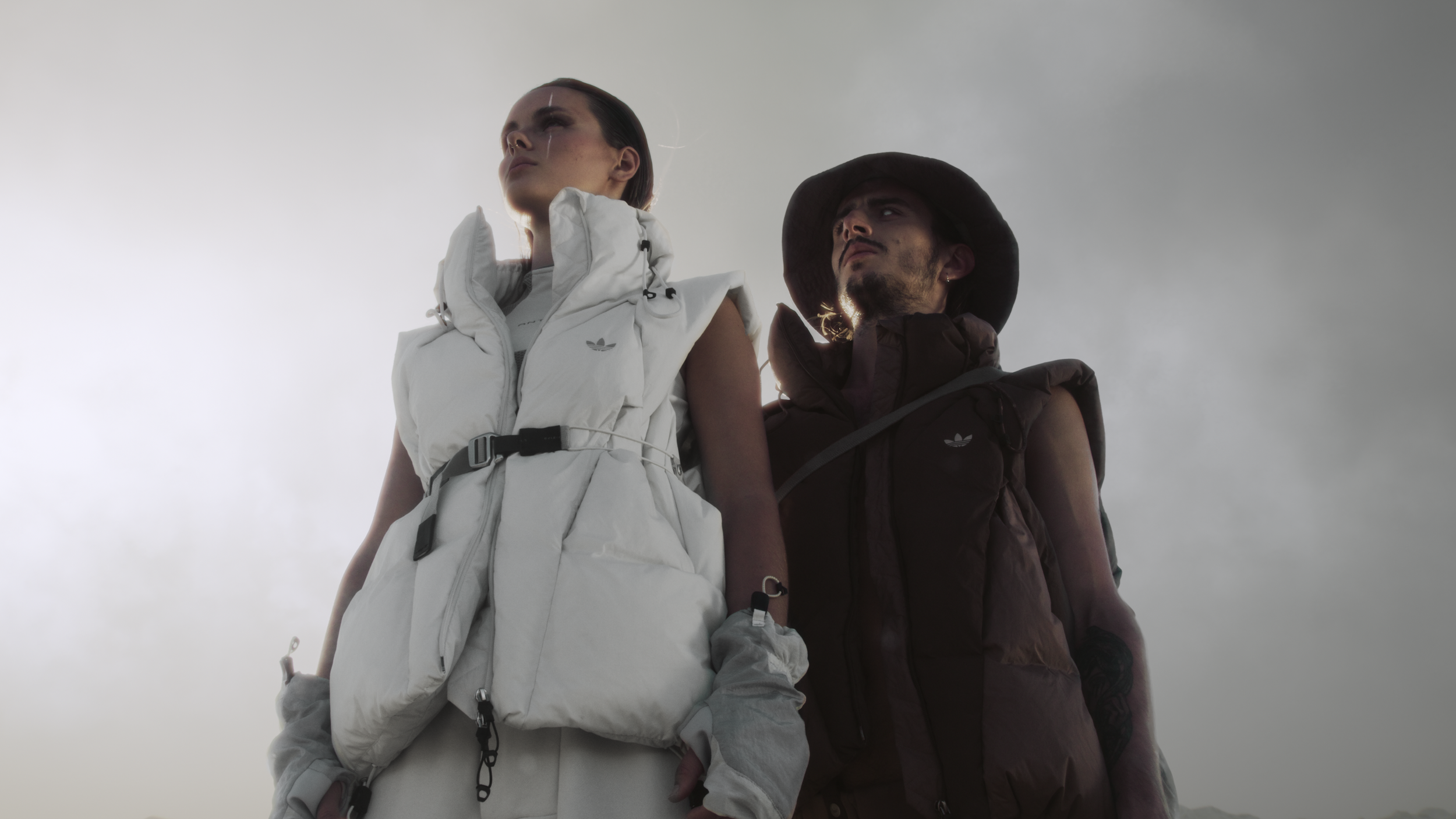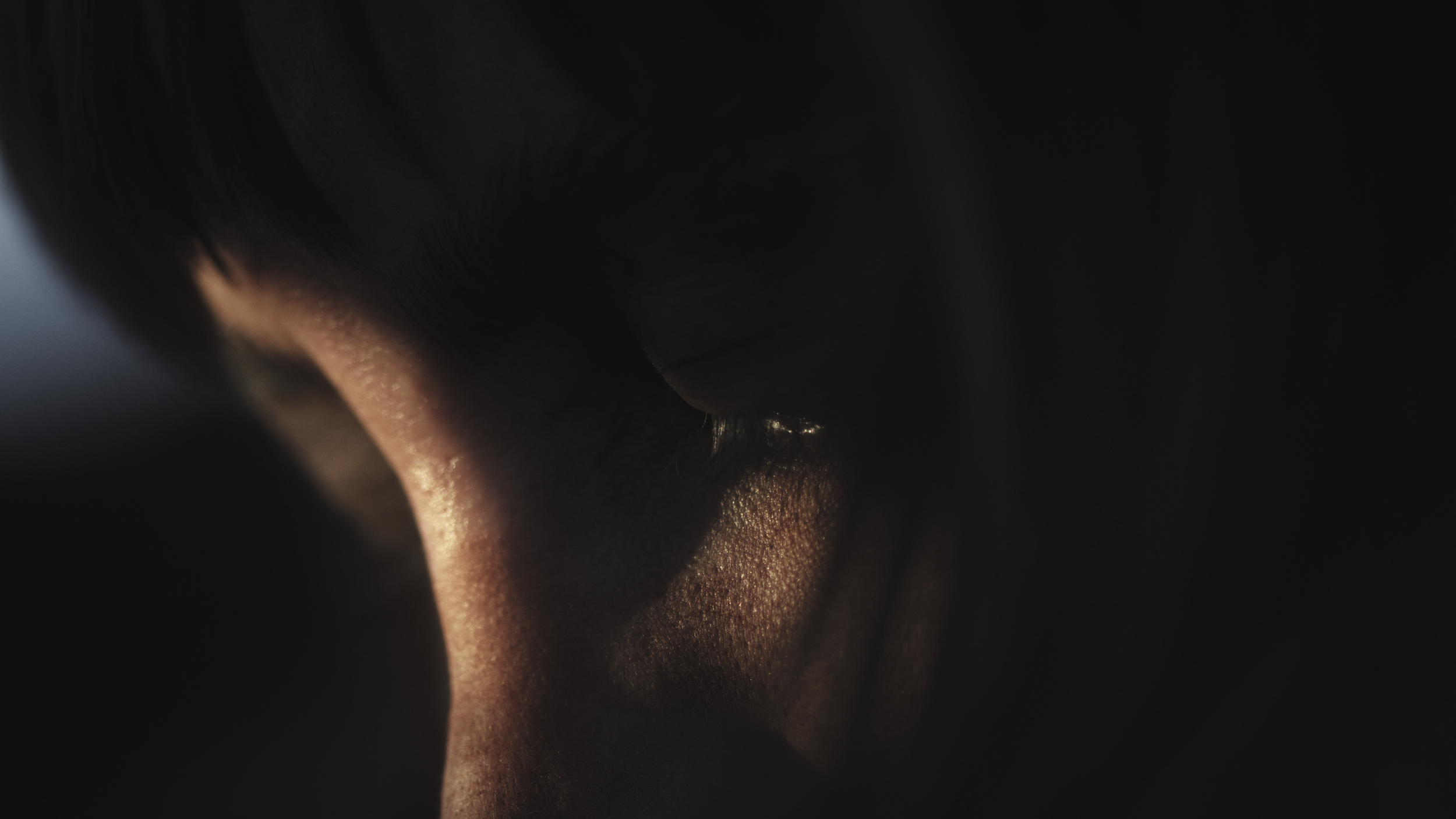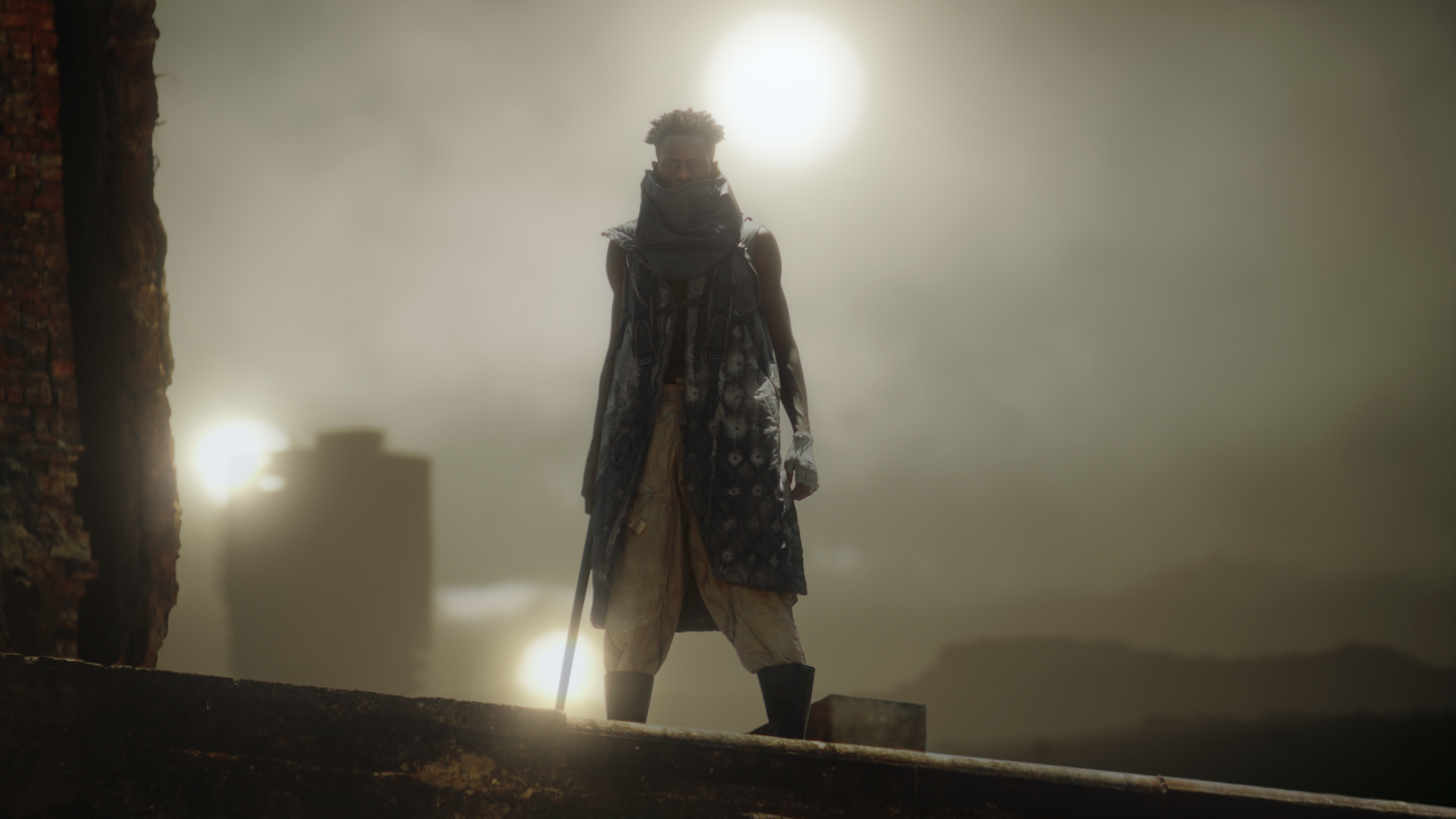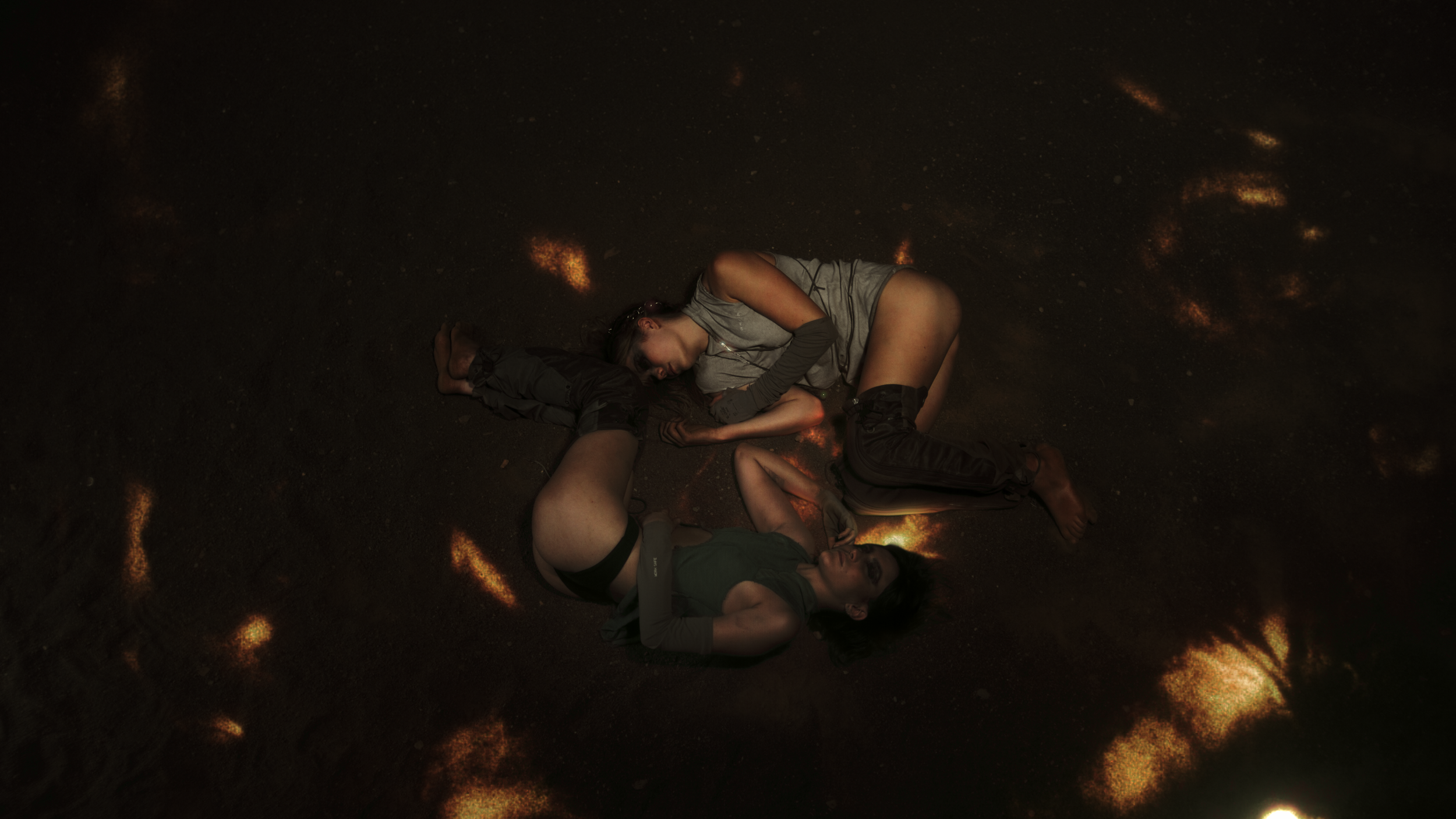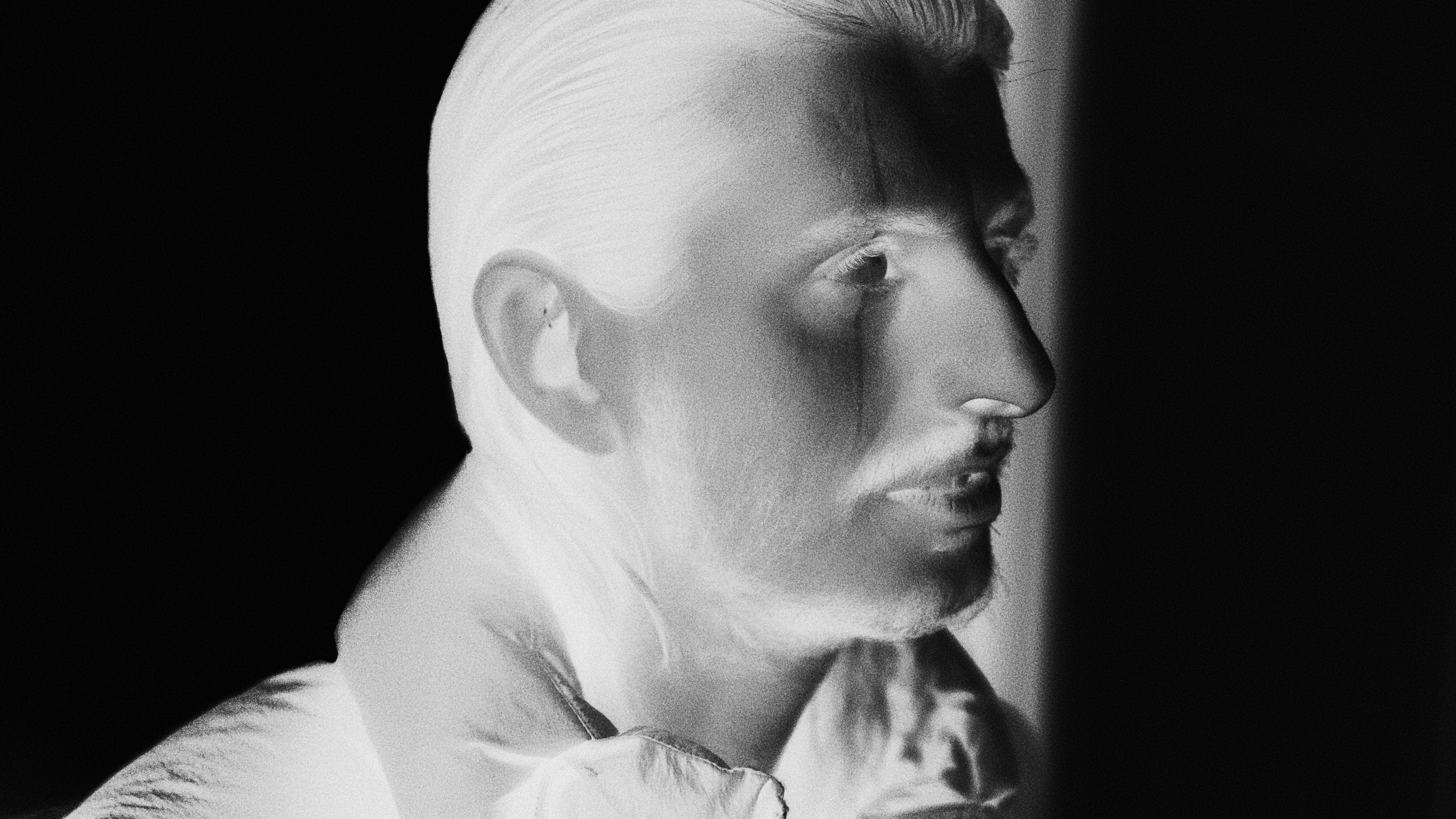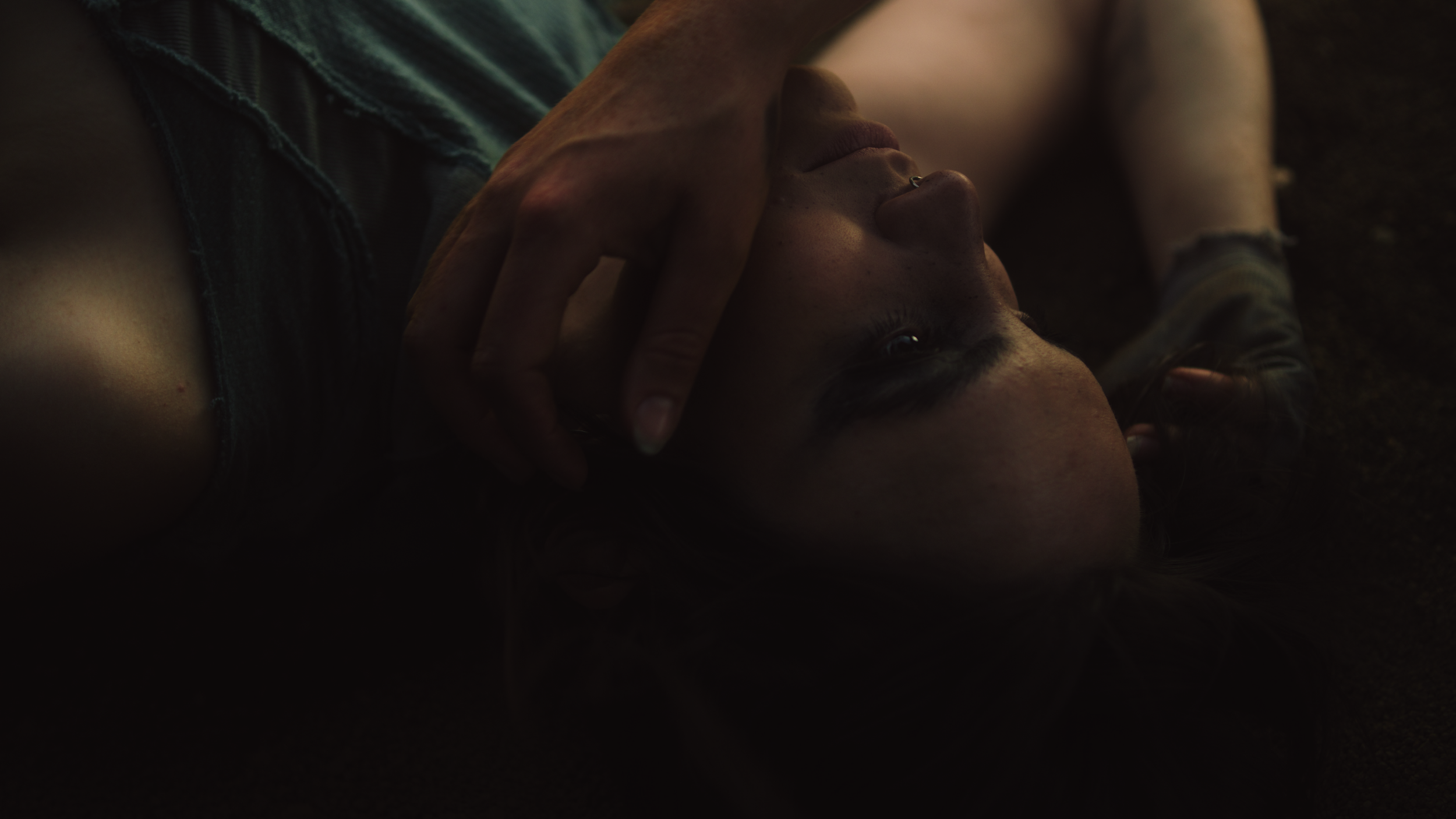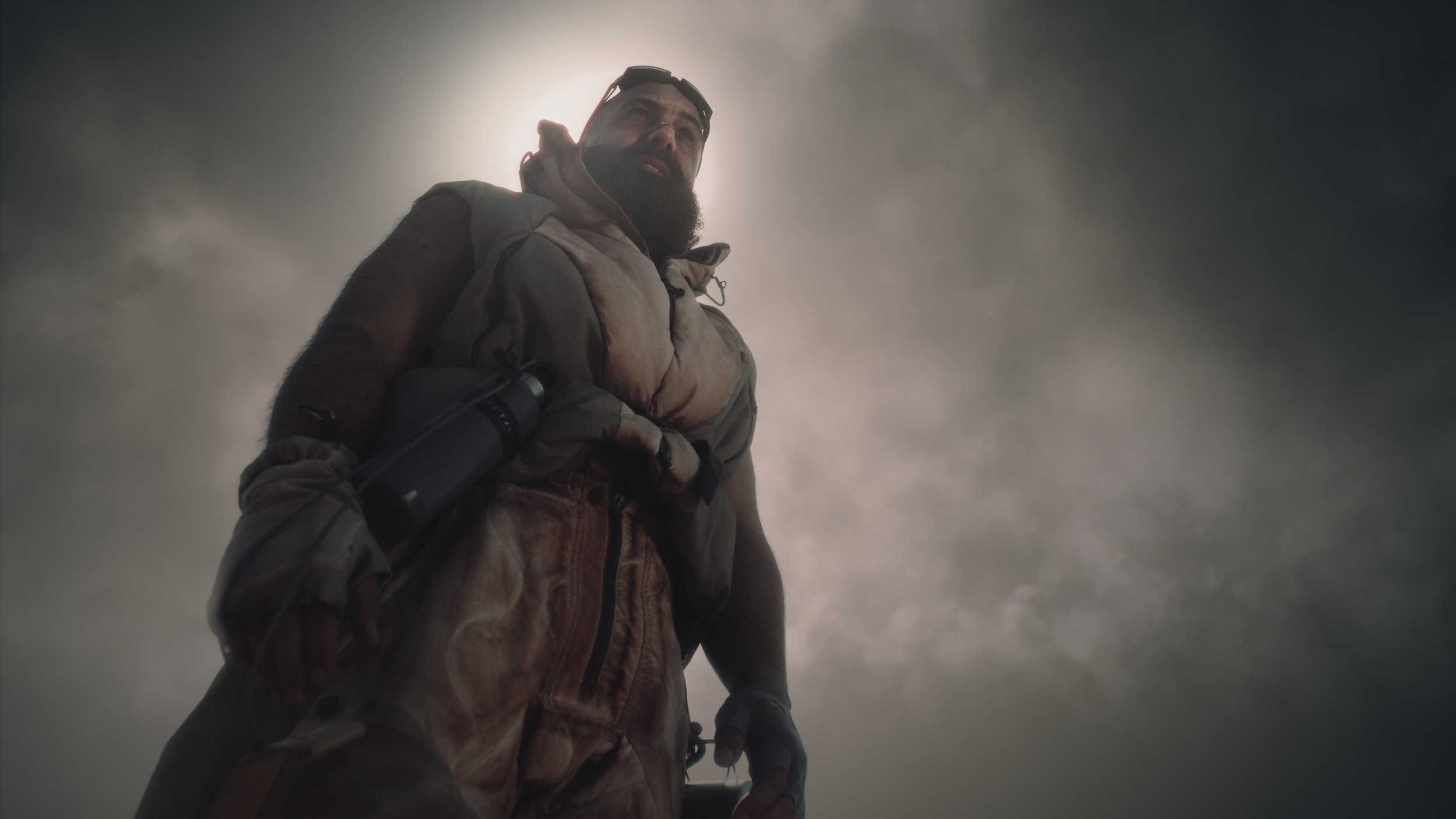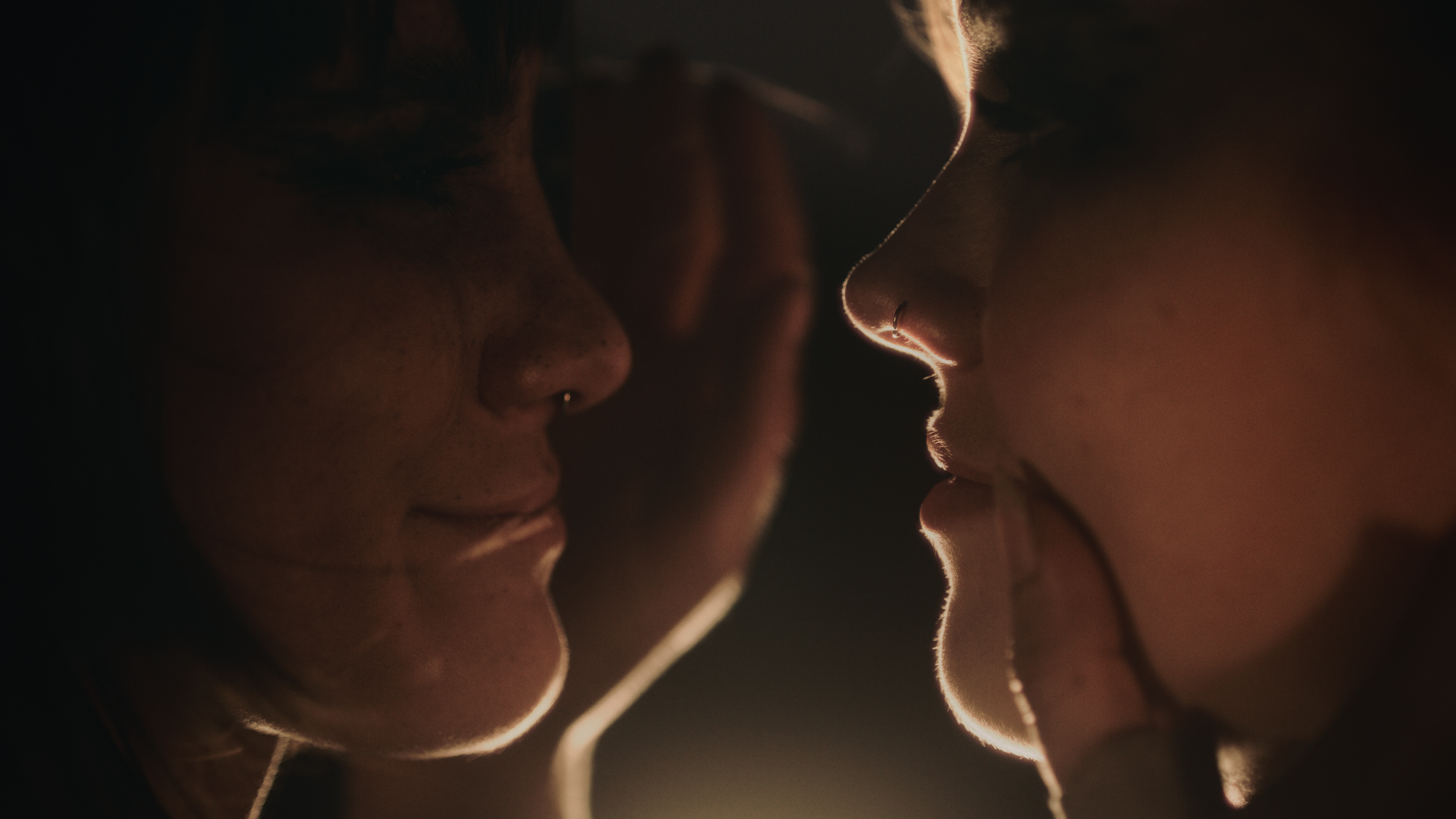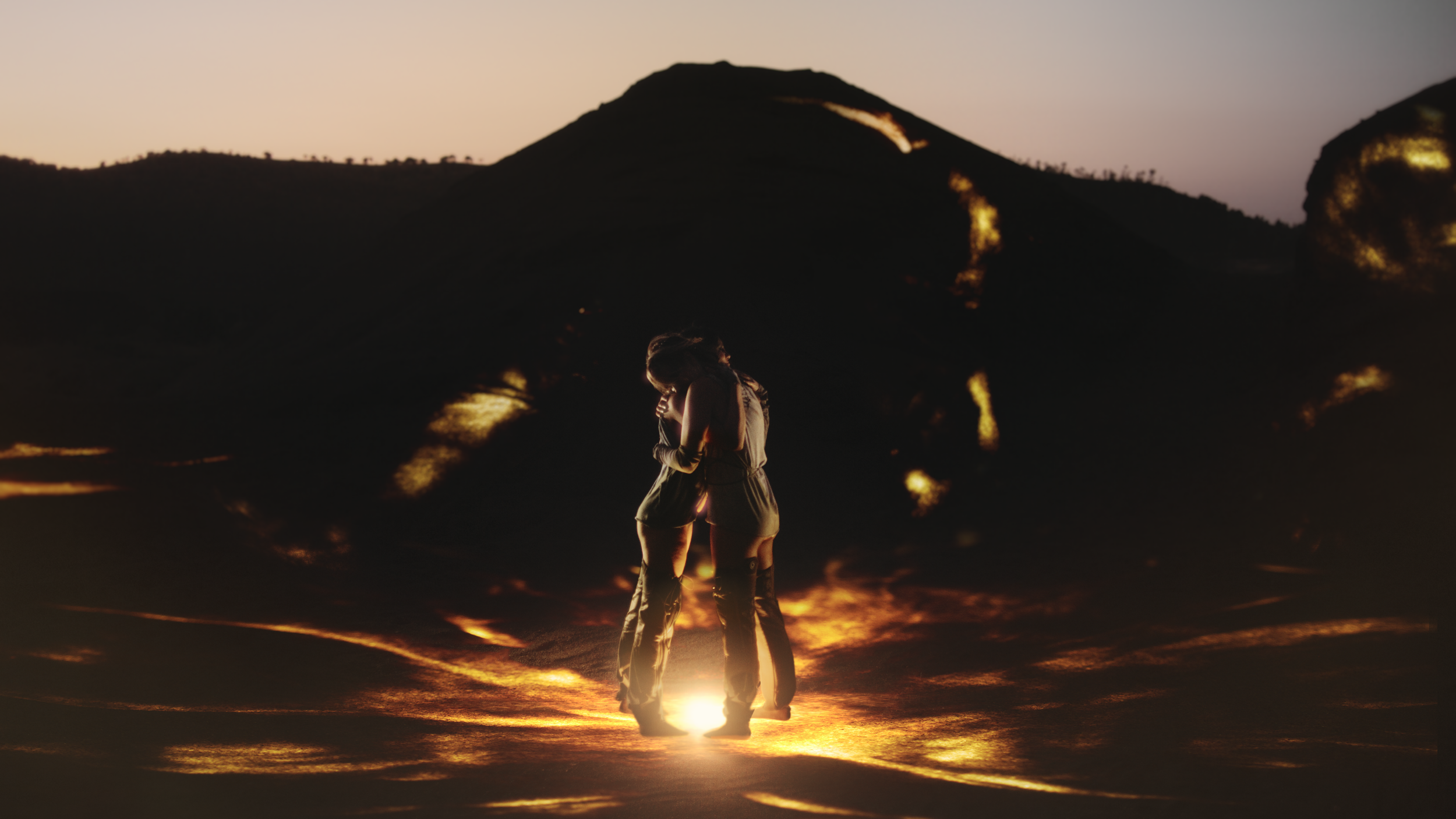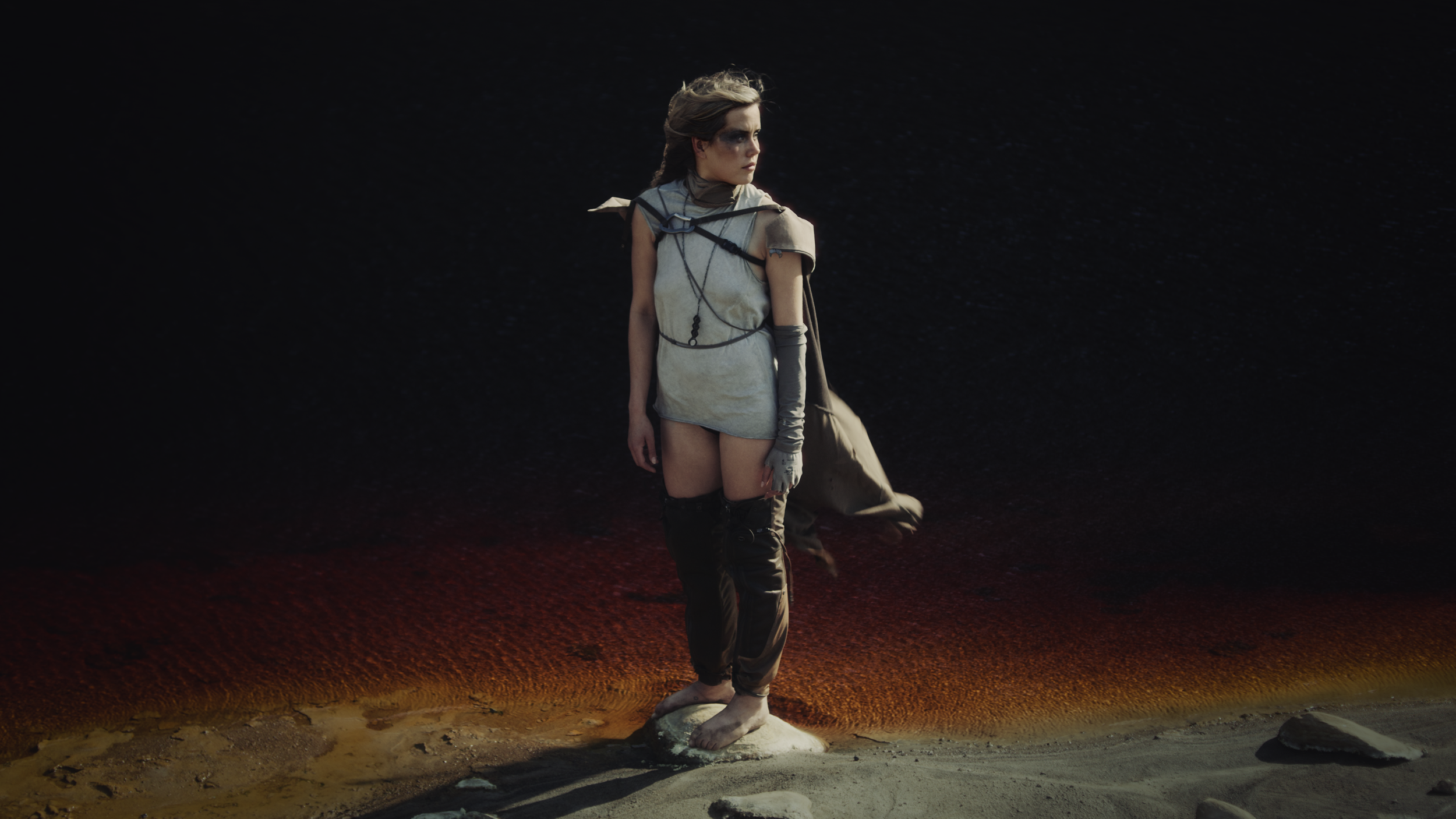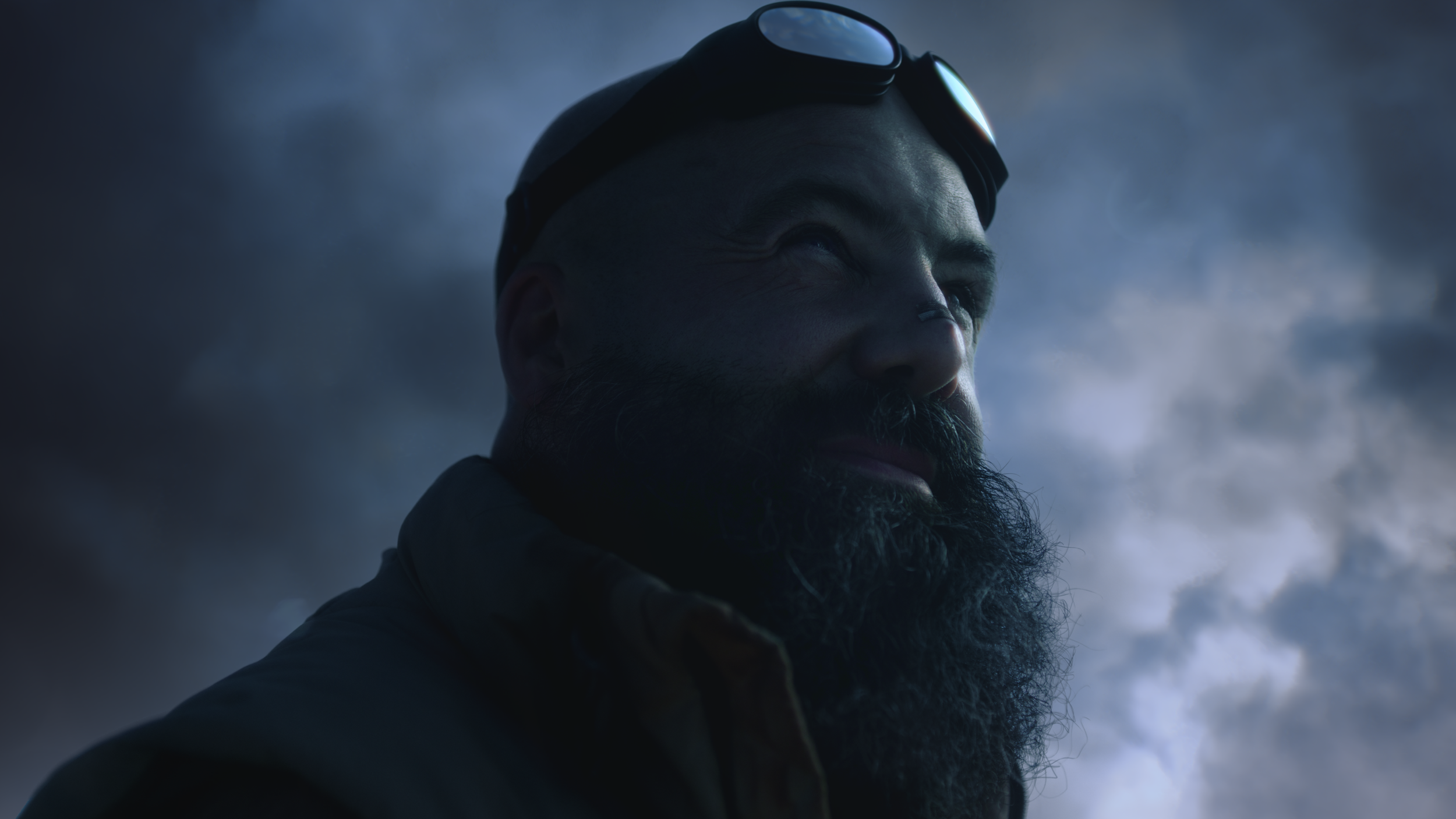EXILES
The depleted terrains of Zone 3
Directed by Tomas Kamphuis
Bringing together a diverse group of creatives - Directed by Tomas Kamphuis and commissioned by Hamcus and Adidas China - EXILES plunges viewers into the heart of a parched landscape, where individuals cling to existence amidst the harsh realities of drought and isolation. In the desolate expanse of Zone 3, where survival is a daily battle against the unforgiving elements, a celestial event unfolds, heralding a transformative moment for its inhabitants.
EXILES is not merely a story of survival, but a testament to the resilience of the human spirit and the enduring power of hope, even in the most desolate of places.
We love how haven't just made a film; you've built a whole new world! Can you tell us what inspired you to take this approach?
I was initially drawn to Hamcus because of their standout style, but as I got to know Tuff, the founder and creative force behind the brand, my interest quickly evolved into something much deeper. Through our conversations, it became evident that Tuff hadn't just created a clothing line; he had crafted an entire universe. This universe was vast and detailed, with each collection drawing inspiration from different areas and planets within this expansive world. In the story I'm telling, there's a place known as Engine City, which is quite remarkable because it's powered by energy from a star. This innovation has transformed Engine City into a vibrant, prosperous place, full of advanced technology and a high standard of living. But not far from this bustling city lies Zone 3, an area that couldn't be more different. Zone 3, with its rugged terrain and harsh conditions, is home to the outcasts of society—those who live on the margins, the rebels, artists, and individuals carving out existence away from conventional paths. This setting resonated deeply with me, echoing a recurring theme in my work: an exploration of the lives of those who dwell on the fringes, the ones who challenge norms and dare to live differently.
While we never directly witness Engine City within the narrative, its impact is deeply felt. Zone 3, the focus of our story, lies in stark contrast to the city’s advancements. This area remains untouched by the city's prosperity, offering a glimpse into a rugged life on the fringes of technological wonders. Our narrative delves into the lives of Zone 3's inhabitants, who, despite their physical proximity to Engine City, live in a world apart, marked by its arid and challenging conditions.
The narrative of the film centers on a miraculous moment for these outsiders. Due to an unexpected twist of fate, a beam from the city’s energy source ends up hitting a lake in their area, bringing a sudden burst of life to a region that had almost given up on the idea of hope. This event acts as a catalyst, weaving together the lives of these varied characters. It's a turning point that shows even in the most desolate places, hope can find a way to break through.
EXILES is a collaborative project commissioned by Hamcus and Adidas China. Can you share with us how this collaboration came about, your pitching process, and how involved they were throughout?
I initially reached out to Hamcus not with a concrete idea, but more as a fan of their aesthetic, throwing out an open question about the possibility of collaborating. I didn't have a specific type of film in mind; I was just captivated by their unique style and storytelling approach in fashion. Tuff from Hamcus responded with enthusiasm, open to exploring how we could work together. This openness was key, as it gave me the creative freedom to later develop the film in a way that felt true to both our visions. The involvement of Adidas China in this project came about through their recent successful partnership with Hamcus and was just good timing really.
From a production viewpoint, what were some of the biggest challenges you faced and how did you overcome them?
Shooting this film was an adventure, to say the least. We set out to bring the stark, desolate vibe of Zone 3 to life, which led us to some pretty remote and rugged spots in Portugal and Spain. The locations were spot-on for what we needed—places like old, abandoned mines and wide-open stretches of land that felt more like Mars than Earth. But getting to these locations was a journey in itself. There were days we spent up to 8 hours on the road, driving through all kinds of terrain to reach these out-of-the-way spots. It was a test of patience and endurance, especially with our tight schedule and even tighter budget.
The heat was another story. Filming took place during a scorching hot part of the year, with temperatures hitting 45 degrees Celsius. Imagine being in the middle of a vast, open landscape with no shade, the sun just bearing down on you for hours. It was tough on everyone—actors, crew, you name it. Keeping everyone safe and avoiding heatstroke became as much a part of the job as the filming itself.
Despite these challenges, what really kept us going was the people. I called on friends to step into roles both in front of and behind the camera, creating a unique dynamic on set. It wasn't unusual to see someone who was acting one moment assisting with styling and makeup or helping with props the next. This blurring of roles was essential; it allowed us to stretch our resources and tackle the challenges together. Everybody was willing to dive into this project with everything they had, embracing the heat, the travel, and the long days. This shared experience—driving across landscapes, battling the heat, and switching roles on the fly—brought us closer together. It transformed our group of friends into a tight-knit family. We were all in it for the love of the project.
In your description you mentioned that "we crafted a blend of art and technology with set extensions". Could you expand on that, with a focus on the techniques you used?
Our aim was to create a visual style that really brought the world of Zone 3 to life, giving it that distinct, otherworldly feel. A big part of achieving this was through sky replacement. Instead of the typical blue skies you'd expect, we opted for a dusty, alien-like atmosphere throughout the film. This decision was key in setting the right tone and making the environment feel as if it's on a completely different planet.
For certain scenes, like the ones with the two girls lying on the ground, we went for something a bit special. We shot glowing lights underneath glass plates with black sands on them in a studio setup, then layered this footage into the final scenes. We also wanted to visually narrate the transformation of the land from barren to fertile. To do this, we captured footage through a microscope, showing chemical reactions, and used these shots to symbolize the shift from a lifeless to a living, organic landscape. It's a subtle but powerful way to depict change and hope within the story.
The cosmic beam, a central narrative element, required us to push the envelope with technology. We utilized tools like Unreal Engine to generate detailed backdrops and effects. This approach allowed us to transform ordinary locations, such as an abandoned mine, into scenes that truly felt from a different planet.
The project is unique - how do you feel that it has been received? And how are you planning to push it further?
Exiles had a great debut at the Hamcus HQ in Guangzhou during the Adidas collection launch. It's also caught the eye of some of my favorite online platforms like Shots.net, Director's Notes, and Beyond the Short, which is pretty cool. We've got nominations rolling in for film festivals, and while it's still early days, it's already secured a few spots. Excited to see where it goes next on the big screen!
“Our aim was to create a visual style that really brought the world of Zone 3 to life, giving it that distinct, otherworldly feel.”
What’s next for you?
Looking ahead, I'm eager to delve deeper into the fusion of fashion, futuristic vibes, and innovative tech. My recent explorations with AI and Unreal Engine have opened up exciting avenues for immersive storytelling and visuals. Plus, I'm fascinated by the creative possibilities of Augmented Reality.
On another front, I've got a documentary coming out called "Art Chooses Us." It's a dive into the worlds of four African artists, exploring how art intersects with culture and identity across the continent.
Director: Tomas Kamphuis
Writer: Tomas Kamphuis
Producer: Felipe Barros
Producer: Lucia Alonso
Key Cast “Roamer”: Anne de Blok
Key Cast “Roamer”: Duda Garcez
Key Cast “Mine Worker”: Stephen Forster-Brass
Key Cast “Transmitter”: Nicola Gaudenzi
Key Cast “Mine Guard”: Tremor Shakzz
Key Cast “Mine Worker”: Guilherme Vernize
Key Cast “Student”: Davide del Barba
Key Cast “ Student”: Joana Videira
Cinematography: Kevin Kimman
Assistant Cinematographer: Pedro Carvalho
Art Direction: Nicola Gaudenzi
Gaffer: Dick Bloemraad
Makeup: Anne de Blok
Makeup: Duda Garcez
Photography: Lucia Alonso
Editing: Nikki Faberij-De Jonge
Editing: Tomas Kamphuis
Compositing: Mark Yfantidis
Compositing: Eric Limburg
Compositing: Jan Reuser
Original Music & Sound Design: Maurits Verwoerd
Colour Grading: Kevin Kimman
Publicist: Kaitlynn VanderWaal
Special Thanks: Agatha Bainbridge
Special Thanks: Planar Lisboa
Special Thanks: Showreel Lisboa
Special Thanks: DistrictHive
